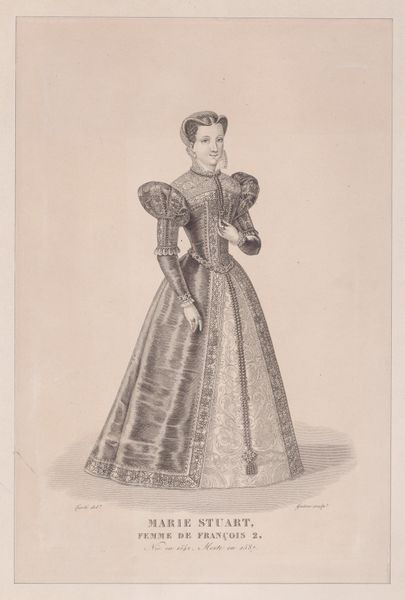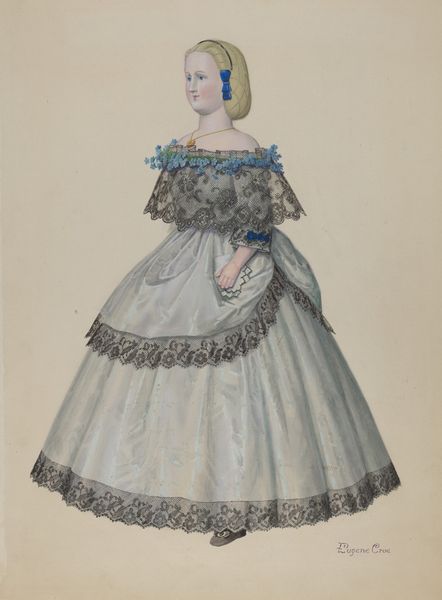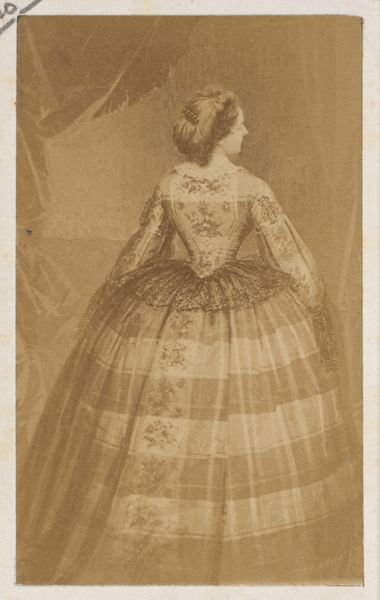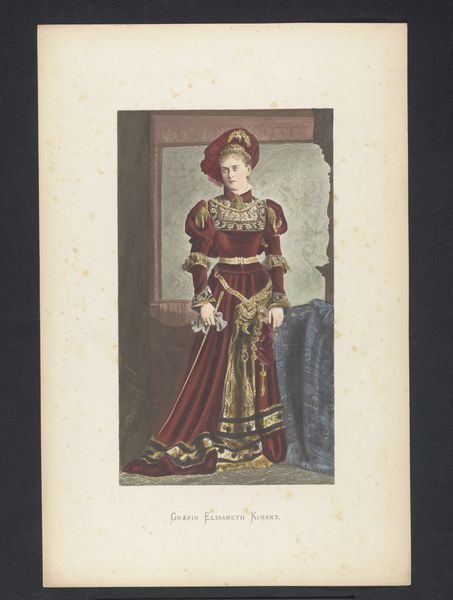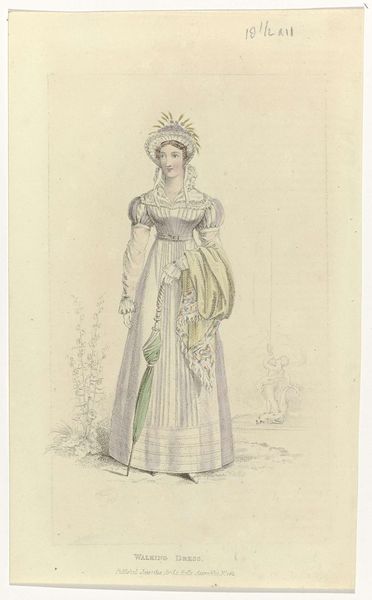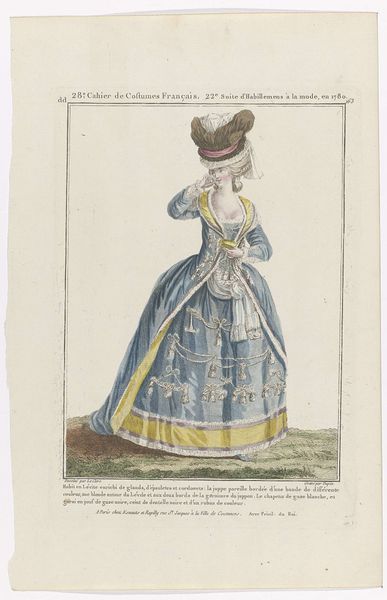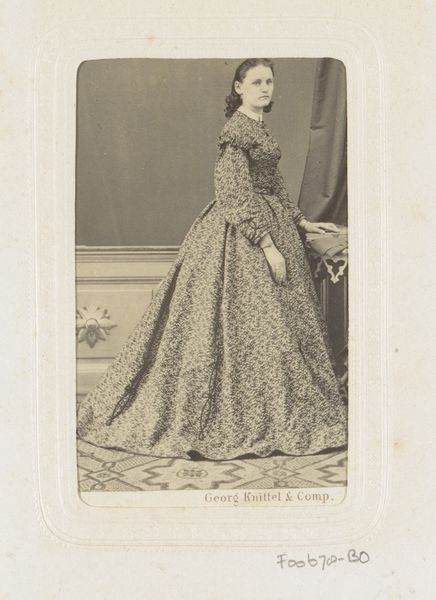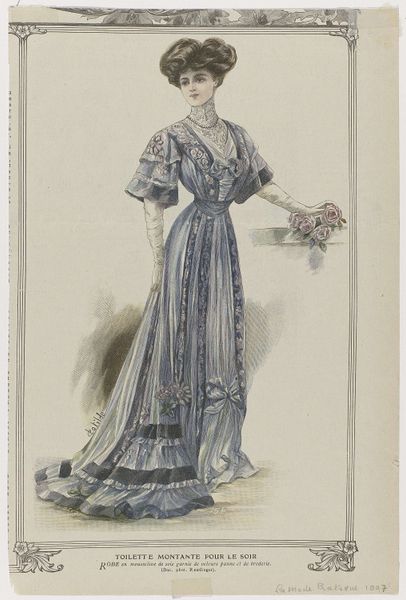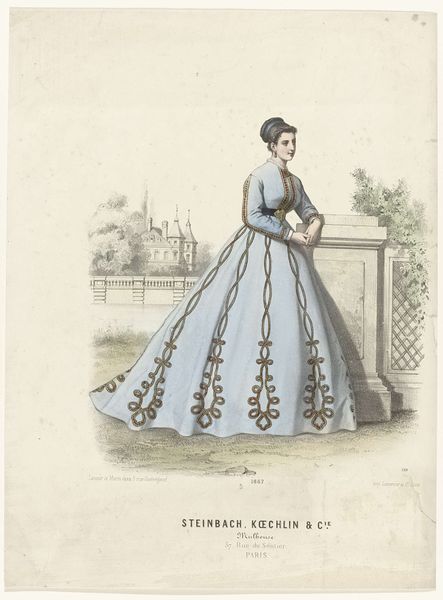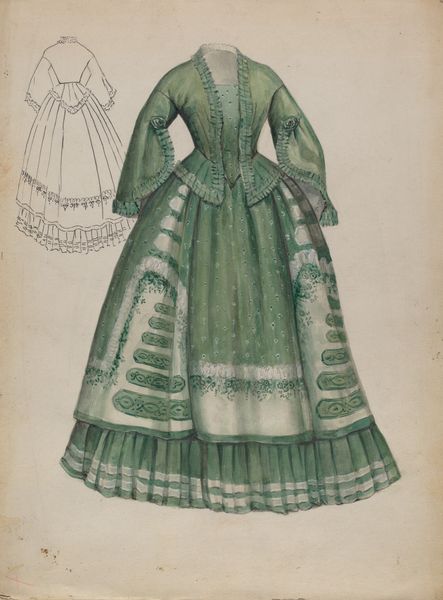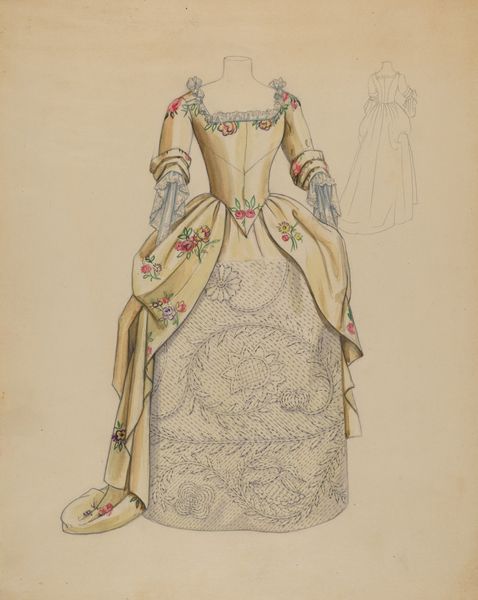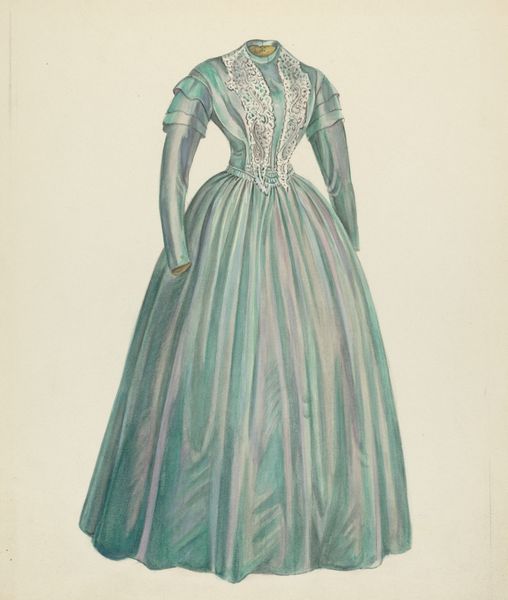
Mary, Queen of Scots (from "Court Magazine and Monthly Critic and Lady's Magazine," volume IV) 1834
0:00
0:00
drawing, coloured-pencil, print
#
drawing
#
coloured-pencil
# print
#
coloured pencil
#
romanticism
#
history-painting
Dimensions: Sheet: 10 1/16 × 6 7/16 in. (25.5 × 16.4 cm)
Copyright: Public Domain
Curator: This is "Mary, Queen of Scots," a print rendered in coloured pencil, dating to 1834. It appeared in the "Court Magazine and Monthly Critic and Lady's Magazine," volume IV. Editor: It's striking how the colours, even faded by time, convey a sense of somber regality. The attention to the fabric's textures, though, gives it an unexpectedly tangible quality. Curator: Absolutely. Think of the social and political weight embedded in each thread. Her dress, particularly, speaks volumes about 19th-century interpretations of Mary's royal image and tragic fate. This publication catered to a specific female readership, shaping perceptions of historical female figures through romanticised visuals and narratives. Editor: Indeed. The production of this image involved skilled laborers transforming inexpensive materials into objects that conveyed class and power. These prints were part of a wider industry, facilitating cultural consumption for the middle classes. We see a similar engagement with materiality in her jeweled dress with all that dense ornamental design—each jewel meant to demonstrate power, yes, but also labor, resources, and a whole economic system built to support that one regal person. Curator: Her perceived power and the patriarchal systems at play that ultimately led to her execution are key elements in her story and that of the role and representation of women in positions of power. Editor: Let's not forget how materials and their transformation impacted 19th-century visual culture, contributing to the distribution of ideology. These coloured prints disseminated idealized portrayals of aristocracy. Curator: Precisely. And through a contemporary lens, analyzing those portrayals reveals how narratives of power and gender were carefully constructed. It’s not merely a picture of a queen, but an encapsulation of complex socio-political forces that impacted the lives of countless women across centuries. Editor: This image allows us to explore how historical images can shape contemporary understandings of female historical figures and the world that shaped her story through production and consumption.
Comments
No comments
Be the first to comment and join the conversation on the ultimate creative platform.
